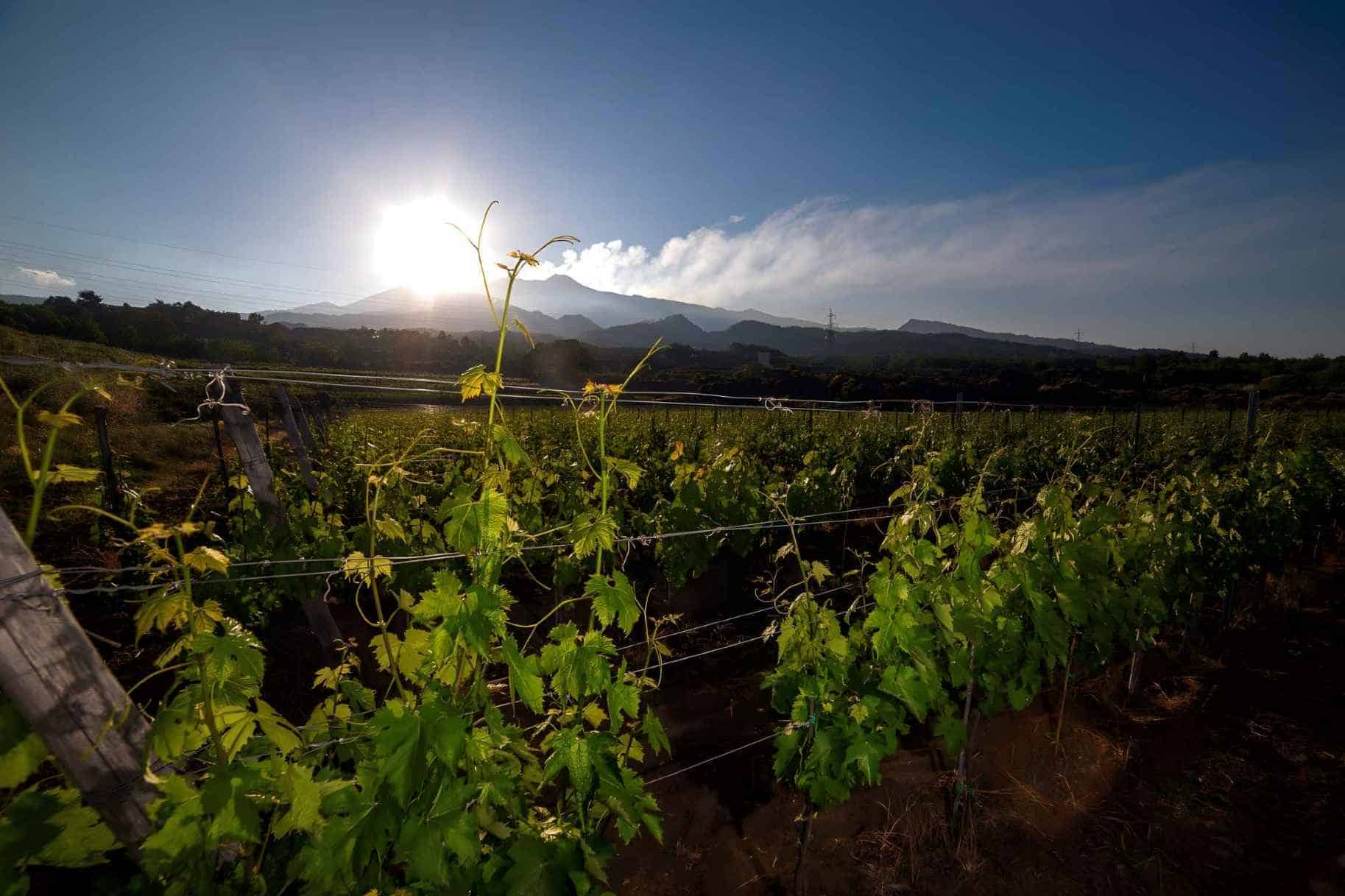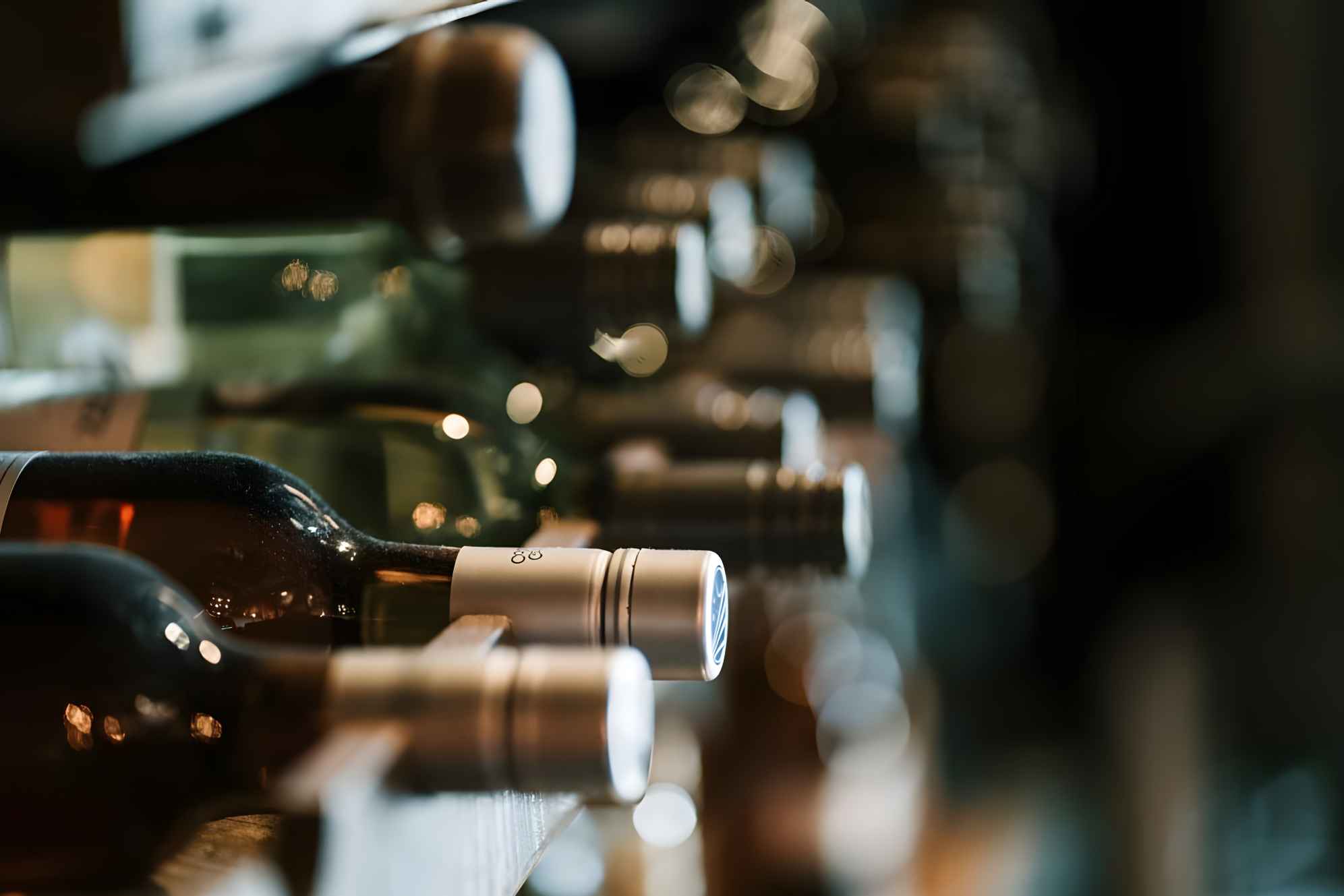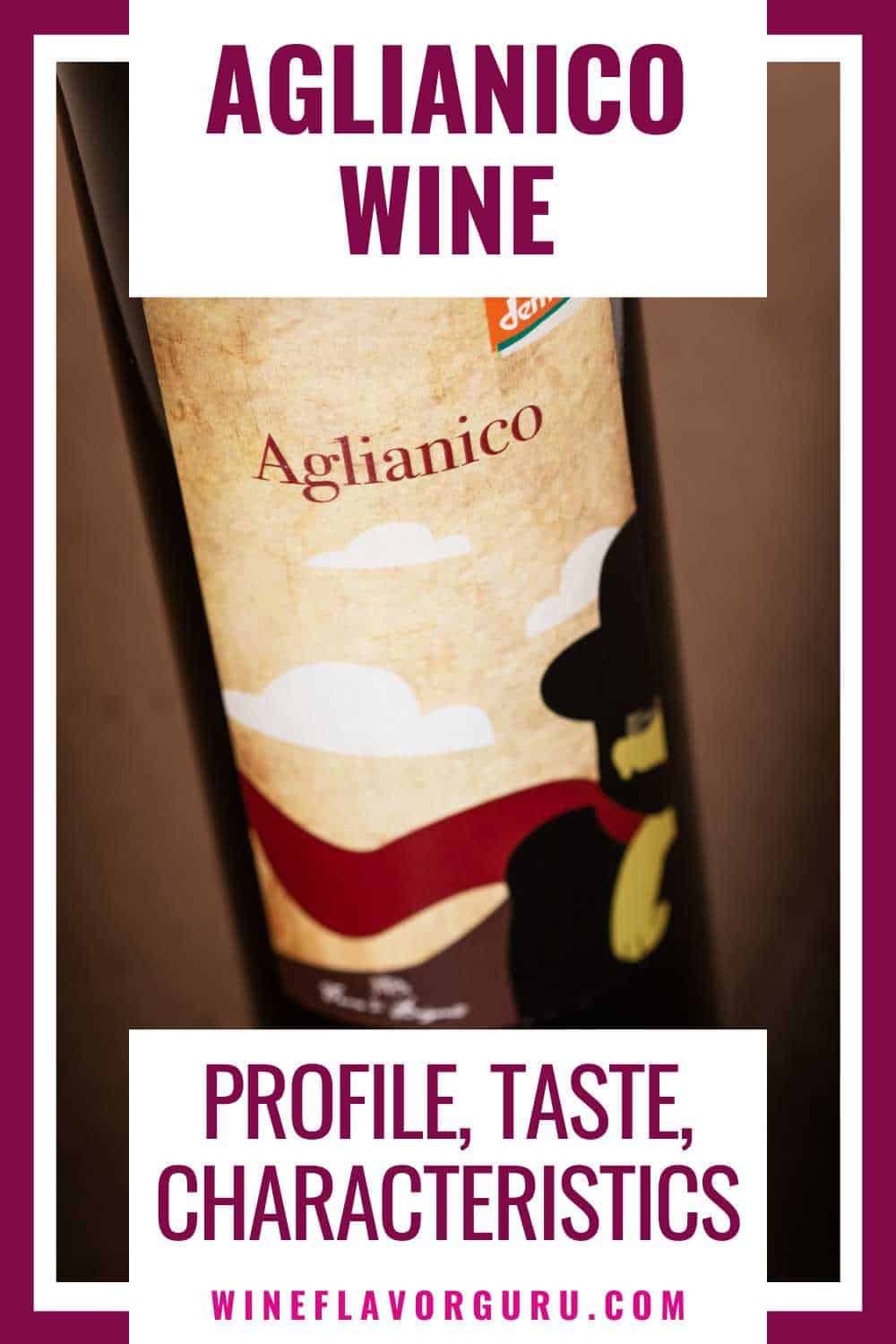Most wine connoisseurs search for different types of wines, and you might be one of those who have come across Aglianico, and it sparked some interest.
So in this Aglianico wine guide, we will explain every essential thing about Aglianico, such as where it grows, its flavor profile, and more.
What is Aglianico Wine?
Aglianico is a red wine variety made from late maturing and rich in tannin grapes. This varietal is also high in acidity, and its full structure makes it interesting for most wine connoisseurs.
Furthermore, what also sets Aglianico apart from other grape varieties is it grows beautifully in volcanic regions and is primarily grown in Southern Italy.
Below is Aglianico’s profile and what to expect when drinking this luxurious wine.
|
Tannin |
High Tannin |
|
Acidity |
High Acidity |
|
Body |
Full-Bodied |
|
Alcohol |
Medium Alcohol (Average of 13% ABV) |
|
Primary Notes |
● Leather ● Game ● Black Cherry ● Smoke ● White Pepper ● Dried Cranberry ●Plum |
Taste and Aroma
You will find alluring scents of juicy red fruit, wood, and spices in this wine. Plums, cranberries, leather, and earthy notes are also present, which are well-balanced and have plenty of body. These flavors are encased in mild acidity and hard yet very silky tannins, which leads to a lingering finish.
Body and Color
Aglianico is a full-bodied wine with a heavy, thick, and dense mouthfeel. Due to its low sugar level and high tannin content, Aglianico is rather dry. Furthermore, thanks to the Aglianico grape’s thick, dark skin, this wine has a deep ruby-red splendor.
Aging
Aglianico was usually made to be aged for at least four years and up to fifty years, with the majority of the aging taking place in casks made of very old oak and lasting for a pretty long period.
Riper varietals have been coupled with new oak; however, it’s debatable whether or not these varieties are successful or loyal to the particular personalities of the Aglianico grape.
History of Aglianico
Aglianico originated in Greece; however, due to some unknown circumstances, Aglianico is no longer found in Greek land. It has been chased away, but over 2,000 years ago, Aglianico started spreading in Italian regions.
It is believed that Greek immigrants brought Aglianico to Italy and planted it in several areas calling it Vitis Hellenica or Greek wine.
Furthermore, since it has resurfaced and started getting attention, Aglianico was strongly compared to Nebbiolo, a renowned grape of Barolo. It even got coined as the “Nebbiolo of the South” as it was usually grown in Southern Italy.
And although this term is designed to flatter Aglianico wine, it really detracts from its appeal by making it sound like a lesser version of Nebbiolo.
So to kill this comparison, Aglianico winemakers made sure to only produce quality Aglianico wines that highlight its unique characteristics to help this varietal make its own name.
Best Regions that Grow Aglianico
Aglianico’s vine has a preference for soil that is rather dry and well-aerated. They require a great deal of sunlight, which causes them to blossom early yet delays their maturation.
Despite the fact that the skins of Aglianico grapes contain a significant amount of polyphenols, which gives them a strong tannic quality, these skins are surprisingly vulnerable to a number of diseases.
Therefore, it is absolutely necessary to control the vines, ensure that they are not unduly saturated, and complete the harvesting process on time.
Aglianico is traditionally cultivated in volcanic soils, yet, it is highly adaptable to the environment of various types of vineyards. But even if the best Italian grapes are grown in higher, cooler locations, they still need to be exposed to a significant quantity of sunlight in order to mature at the appropriate time.
Below are the best regions in Italy that grow Aglianico:
- Basilicata
- Mount Vulture
- Campania
- Taurasi
- Caserta
Attempts to cultivate Aglianico have been made in other climatic zones. Although this has largely taken place in Australia, there have been some encouraging studies conducted in Texas.
Aglianico, with its unusual physical features and great resistance, could be the ideal grape for growing in severe environments where other grape varieties might not do well. However, wine connoisseurs may have to wait for years to reap the rewards of these preliminary studies.
How to Enjoy Aglianico Wine?
Knowing how to serve and what to pair with Aglianico will let you know how to best enjoy this wine. Since this is a premium type of Italian wine, pay close attention to this part, so you get to experience Aglianico at its best.
Temperature
Serve the wine at a temperature that brings out its fruity undertones while taming any harsh tannins or harshness. Proper serving temperature is essential for fully appreciating the wine’s scent and bringing out its best flavors.
The more complex and nuanced the red wine, the warmer it should be served. On the contrary, a young red wine that is both fruity and lacks structure is best enjoyed at a cooler temperature. Aglianico tastes best when served between 64 and 68 degrees Fahrenheit.
Food Pairings
It should come as no surprise that Aglianico pairs well with hearty Italian cuisine, given that its fruity and earthy characteristics are able to withstand the acidity of certain dishes and lend depth to others that include meat.
With its high acidity, Aglianico goes well with savory dishes like Beef Brisket, Smoked Pork, Carne Asada, and Beef stew. It also pairs well with cheeses like Pecorino, Asiago, and Provolone. And if you are vegetarian, pair it with Roasted Mushrooms, Tempeh, and Portobello Mushroom Steaks.
Shell Life
Aglianico is suitable for extensive maturation thanks to its prominent tannins. But Aglianico is best enjoyed when one is older.
The wine’s pronounced tannins and acidity fade with age, leaving behind a smooth, supple beverage. Aglianico wine should be aged for around five years following vinification, at which point it should be served at its best period.
Popular Blends
Aglianico is often regarded as one of the three most important Italian varietals because it can give rise to wines that are refined, nuanced, and packed with tannin. Because of its depth and structure, Aglianico is frequently used for blending.
Below are five of the most popular blends with Aglianico in Italy.
|
Wine |
Region |
Blend |
|
Ramitello Rosso |
Molise, Italy |
● 85% Montepulciano ● 15% Aglianico |
|
Barbera and Aglianico Red Blend |
Campania, Italy |
● 47% Barbera ● 18% Aglianico ● 17% Montepulciano ● 18% Rhône |
|
Terra di Lavoro |
Roccamonfina, Italy |
● 80% Aglianico ● 20% Piedirosso |
|
Tendu California Red Blend |
California, United States |
● 47% Aglianico ● 42% Montepulciano ● 11% Barbera |
|
Pregio Del Conte |
Marche, Italy |
● 50% Montepulciano ● 50% Aglianico |
Best Aglianico Wines
As mentioned, Aglianico is among Italy’s best wines and is considered royalty. Therefore, expect to find premium Aglianico wines with DOC and DOCG designations.
What are DOC and DOCG?
Denominazione di Origine Controllata (DOC) is a classification for quality wines in Italy. There are rules for a wine to earn this status, such as being made with grape varieties that are only produced in a specific region, age requirements, and maximum harvest yields.
As for Denominazione di Origine Controllata e Garantita (DOCG), it is the highest Italian classification for wines, and it was established in 1980.
Officials created this classification due to complaints that there are a lot of DOC wines. Furthermore, DOCG has several stricter rules than DOC, such as the winemaking procedure, grape ripeness, and maturation.
As of 2022, there are less than 100 Italian wines with DOCG titles, and three are Aglianico wines, which are listed below.
Aglianico del Taburno
Aglianico del Taburno is a full-bodied wine with a great acid structure and tannins. It is made from Aglianico grapes cultivated in Mount Taburno, Campania. This wine was designated with DOCG in 2011 but has already received a DOC tag since 1986.
Aglianico del Vulture
Aglianico del Vulture is another full-bodied red wine that holds a DOC title. This wine is made from Aglianico grapes grown explicitly in Monte Vulture, in the Basilicata region. For a bit of history, this wine landed its DOC title in 1971 and was elevated to DOCG as Aglianico del Vulture Superiore.
Taurasi
Taurasi DOCG is one of the best wines Italy is most proud of. It is usually compared to Aglianico del Vulture, but Taurasi is complimented more for its full structure, aging potential, pleasant acidity, and sophisticated taste.
The southern Italian region where Aglianico is cultivated is known for its volcanic soils and steep mountain settings.
The three DOCGs mentioned above produce some of the finest examples in the world. In other parts of Southern Italy, you’ll find it less frequently and more typically blended with other grapes.
Summary
Now that you are done reading this essential Aglianico wine guide, we believe you got the understanding you need about this wine variety. Thus, go on and explore the luxurious taste of Aglianico and have a whole new level of wine experience.

George Moore, co-founder of Wine Flavor Guru, is a charismatic entrepreneur with a rich background in California’s wine industry. Alongside Sylvia, he transformed a Sonoma County vineyard into a source of premium wines. George’s expertise in sourcing exceptional grapes and his approachable style make wine appreciation both accessible and engaging.







